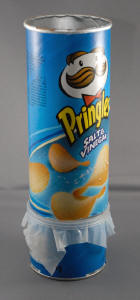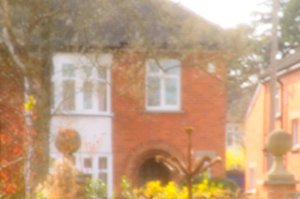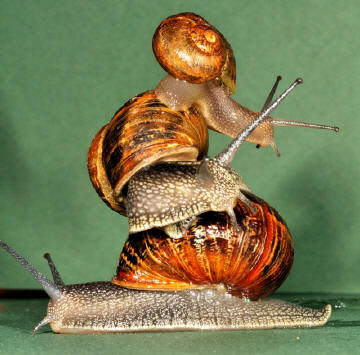Article
Experimental Photography
| We can all learn a lot from experimenting,
and photography is an area where this is particularly applicable.
We can undertake experiments to refresh our memory and check we have
understood things, to question areas of knowledge
that we read in magazines we feel are wrong, to testing the combination of
knowledge and developing new skills.
Take for example the pinhole camera, most
photographers have an idea what this is, but few realise that you can
create zooms, or that you can correct
perspectives,
 stopping buildings from
leaning back, with a pinhole camera. stopping buildings from
leaning back, with a pinhole camera.
Take a look at :-
|
  |
|

 Image taken with a camera with no lens,
but using a pinhole instead Image taken with a camera with no lens,
but using a pinhole instead |
You will see that the last
4 of the articles listed above have practical experiments that you can
do yourself. You will find within the
photography section  a
lot of other articles that have an experimental aspect to them, for
example:- a
lot of other articles that have an experimental aspect to them, for
example:-
and photography projects on various topics. |
There are a lot of areas where photography is
misunderstood by many people and these errors echo from one to another,
particularly through magazines. Take for example, the concept that
depth of field
 is a third in front and two thirds behind, so focus a third into the
shot. This is not completely correct, it only applies when items are very
close, less than the hyperfocal distance, beyond that it's about 50/50 in
front and behind. As an experiment, photographing railings at different
distances will show this. is a third in front and two thirds behind, so focus a third into the
shot. This is not completely correct, it only applies when items are very
close, less than the hyperfocal distance, beyond that it's about 50/50 in
front and behind. As an experiment, photographing railings at different
distances will show this.
Here are a few tips to assist you in the
world of experimental photography.
-
When we experiment we want to tie down
as many variables as we can, so we are only changing, if we can, one
variable at a time.
-
If experimenting with lighting use
something that is stationary, i.e. a
Girlequin,
 rather than live models, or a still life.
rather than live models, or a still life.
-
Make a note of everything that you do, you won't remember it fully
afterwards.
-
Don't accept as gospel anything that you have not proven yourself.
-
Always look for exceptions to everything, so if it works at one setting try
others, this rules out chance combinations that work.
-
You can connect up many items, for
example non Nikon lenses to Nikon cameras,
electronic triggers  to fire
cameras, and more, so keep an eye open for sources and information that
will assist with this. Add information you find to a scrapbook, or if you
feel a bit of a wizard or a witch you could call it a book of shadows and
include your experiments as well. to fire
cameras, and more, so keep an eye open for sources and information that
will assist with this. Add information you find to a scrapbook, or if you
feel a bit of a wizard or a witch you could call it a book of shadows and
include your experiments as well.
-
Develop aids as you
go, and collect aids
others have developed when you go on training courses. For example like
our three fold laminated EV Guide
 which you can download, print and use. which you can download, print and use.
-
Watch this online magazine for more projects and other information.
But most of all do more
experimenting, play with lenses, look at
perspective,
 look at sloping back effects when using different lenses close to
buildings, look at effects you can produce by changing the
white balance
look at sloping back effects when using different lenses close to
buildings, look at effects you can produce by changing the
white balance
 settings including to non standard settings, try to use everyday items
for other uses, look at
filters,
settings including to non standard settings, try to use everyday items
for other uses, look at
filters,
 filters, again using them in imaginary ways, play with
lighting, fill flash, reflectors
filters, again using them in imaginary ways, play with
lighting, fill flash, reflectors
 and.... well just about everything.
and.... well just about everything.
Why not try to put aside a few days each
month just to experiment, to develop new skills and reinforce old ones.
What you will discover is that it follows the normal pattern of the circle
of knowledge the more you discover and know the more new areas you can
think of that justifies more experimenting or research.
The experience that you gain from
experimenting makes the difference between a person who has to constantly
ask for assistance and the person who can give it. |

 Image from
Photographing Snails - Project
Image from
Photographing Snails - Project

|
Some useful contacts for
experimenters parts
In order to connect an old lens of a
different make, or an enlarger lens or some other item to your camera it
is
helpful to have adaptors. You can find information on some, plus a
service to make what you need, at
www.srb-griturn.com,
 they also
have a range of other items for those of us who experiment, so take a
look or ask for their free catalogue. they also
have a range of other items for those of us who experiment, so take a
look or ask for their free catalogue.
To find the more usual items, such as stepping
rings to switch between filters, tripod heads, clamps and the like I would
suggest you start by looking at
www.speedgraphic.co.uk,
 they also
have most other photographic and lighting accessories and a free
catalogue available. they also
have most other photographic and lighting accessories and a free
catalogue available. If you want
pinholes or even wooden pinhole cameras, or anything similar take a look at
this website
www.pinholesolutions.co.uk,
 see also
some information we have on what is available, prices etc on
Pinhole cameras
- further information. see also
some information we have on what is available, prices etc on
Pinhole cameras
- further information.

See Also:
Pinhole Photography Section

A pinhole for your DSLR

Pringle tube pinhole camera 
Pinhole Kit MK3

Pinhole Adaptor

Pinholes from the
Pinhole
Factory

Pinhole
Cameras
- Further Information

Stanton Drew Stone Circle - Pinhole
Gallery
 |